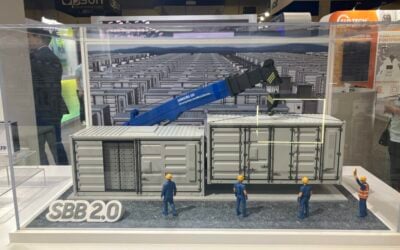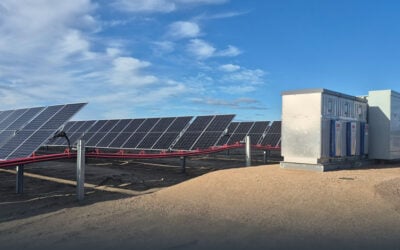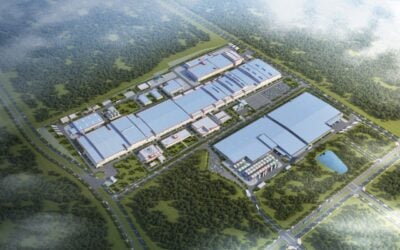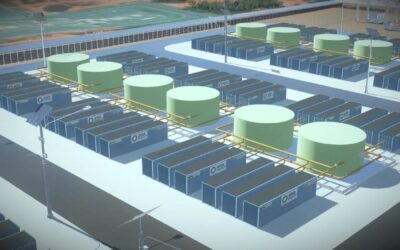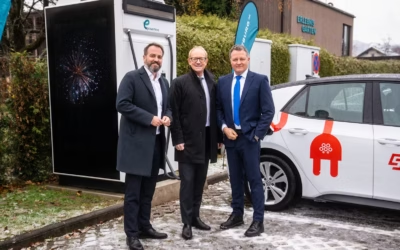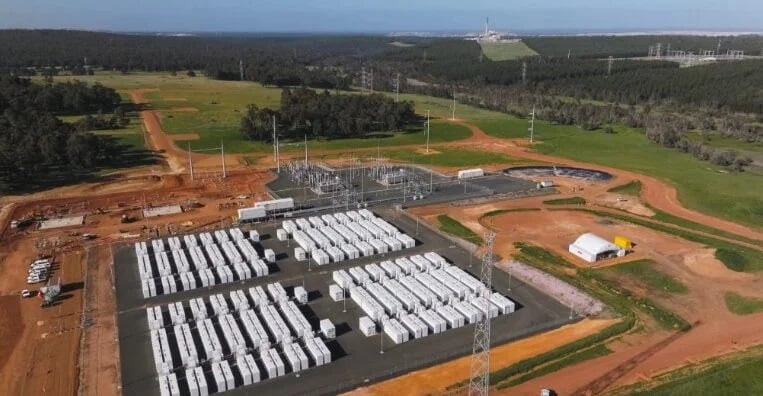
Tesla’s energy storage business continued to grow in Q1 2025 even as profits and vehicle sales fell, but faces greater exposure to trade tariff risks than its automotive segment.
The US-headquartered automotive, energy and software technology company released its first quarter results earlier this week (22 April), reporting a 20% drop in automotive revenues year-on-year and a 15% fall in gross profit.
Gross profit was just over US$3.1 billion for the quarter, versus just under US$3.7 billion in Q1 2024, while gross margin, at 16.3% for Q1 this year, was down year-on-year from 17.4%.
However, its energy generation and storage revenues were up 67% compared to the first quarter of 2024, at US$2.73 billion versus US$1.635 billion.
Try Premium for just $1
- Full premium access for the first month at only $1
- Converts to an annual rate after 30 days unless cancelled
- Cancel anytime during the trial period
Premium Benefits
- Expert industry analysis and interviews
- Digital access to PV Tech Power journal
- Exclusive event discounts
Or get the full Premium subscription right away
Or continue reading this article for free
In the three-month period, the company deployed 10.4GWh of energy storage across its utility-scale Megapack battery energy storage system (BESS) and residential Powerwall range.
This was slightly less than the 11GWh reported for Q4 2024, but a 154% increase year-on-year from Q1 2024’s 4.1GWh and equivalent to around one-third of the 31GWh total Tesla deployed worldwide last year.
While the energy segment includes solar PV, PV figures appear to be low enough that they are no longer included in operational summaries issued every quarter for investors. Solar deployments continued to slide since the company’s 2016 acquisition of SolarCity, the US solar installer formerly run by Tesla CEO Elon Musk’s cousins Lyndon and Peter Rive.
In an earnings call to explain results, Musk said the energy business is “doing very well,” before giving a somewhat rambling explanation of how “Megapack enables utility companies to output far more total energy than would otherwise be the case.”
Perhaps due to his proximity to the Trump administration and a shift in his perceived fanbase demographic, rather than emphasising battery storage’s role in the global shift to renewable energy, Musk’s sole brief comment on stationary energy storage focused on how batteries can be the “buffer” to allow power plants to operate at “peak power for all 24 hours.”
“This is a massive unlock on total energy output of any given grid over the course of the year, and utility companies are beginning to realise this and are buying in our Megapacks at scale,” Musk said.
Tesla has also deployed more than a gigawatt-hour of residential Powerwalls for the first time in a single quarter.
The company noted that while its second Megapack ‘gigafactory’ in Shanghai has begun producing systems, which are en-route to customers, its contribution was not counted in the figures. The factory is currently at 20GWh annual production capacity and is planned to ramp to 40GWh—eventually meeting the same production volumes as Tesla’s first Megapack plant in Lathrop, California, US.
Musk said that the quicker the company can scale production of both Megapack and Powerwall, the better it could meet rising demand.
Growing electricity demand give BESS a key role to play on grids
Most attention on Musk’s earnings call appearance was drawn to his announced intent to step back from activities working at the US Department of Government Efficiency (DOGE), along with relentless mentions of self-driving cars, AI and robots.
Analysts joining the call did not ask any questions pertaining to the energy business. Perhaps the most significant mention came from Tesla CFO Vaibhav Taneja, who discussed the potential impact of trade tariffs in more detail.
Musk had said broadly that he was against tariffs in global trade but would respect president Donald Trump’s policy direction in this area.
Taneja elaborated in prepared remarks, saying the impact on Tesla’s automotive business would be limited, although the company would not be “immune”.
However, on energy storage, the CFO said the impact of tariffs would be “outsized since we source lithium iron phosphate (LFP) battery cells from China.”
“We’re in the process of commissioning equipment for the local manufacturing of LFP battery cells in the US. However, the equipment which we have can only service a fraction of our total installed capacity,” Taneja said.
He noted that even for production capacity being built within the US, the equipment to kit out factories would likely have to be imported from China.
“We’ve also been working on securing additional supply chain from non-China-based suppliers, but it will take time.”
On the other hand, Tesla’s newly opened Shanghai ‘Megafactory’ would “take care of our business outside the US,” the CFO said.
Nonetheless, the US is Tesla’s single biggest market by country by far. While its Form 10-Q filed with the US Securities and Exchange Commission (SEC) didn’t break out geographically between automotive and energy segments, total Q1 revenues from US sales were at more than US$10 billion, compared to US$4.3 billion from sales in China and US$4.7 billion from ‘other international’ markets.
In the 10-Q, Tesla noted among risk factors to its business performance that while the company has “continuously aimed for a strong domestic supply chain,” for its electric vehicles and lithium-ion batteries, “certain parts and components are difficult or impossible to source within the United States.”
Since Trump’s 2 April announcement of ‘reciprocal tariffs,’ the subsequent 90-day pause started a week later and the exacerbation of trade tensions and tariff hikes between the US and China, various sources have told Energy-Storage.news about their present and expected impacts.
Rosa van Reyk, senior underwriter at specialist renewable energy insurance firm GCube said some utility-scale projects close to financial investment decision have already been cancelled. Interviewed for the same article, analyst Iola Hughes at Rho Motion said the impact of even high tariffs on Chinese imports could be limited due to their being offset by the falling costs of lithium batteries.
Ray Saka and Ken Dao of solar-plus-storage-focused BESS system integrator IHI Terrasun also said some projects would likely see delays and that moving to domestic sourcing is the lowest-risk option, but will be challenging.
Saka said the rise in demand for electricity in the US would likely see BESS play a significant role in helping utilities meet load growth. Similarly, Tesla said in its investor deck issued with the Q1 results that rises in demand for electricity would mean robust demand for batteries.
“Although increasing tariffs may cause market volatility and near-term impacts to supply and demand, we see electrification of the economy and growth of AI increasing the need for energy storage as a source of base load and grid stability,” the company said.
This article has been amended from its original form to accurately reflect Rosa van Reyk’s role as senior underwriter at specialist renewable energy insurer GCube.

